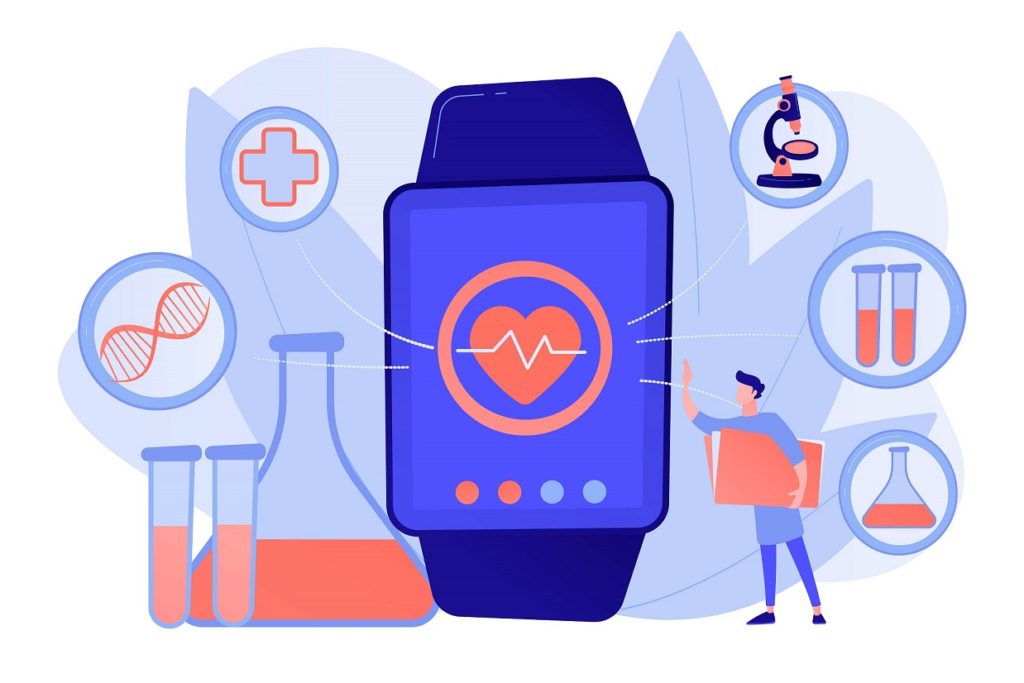
The Role Of Wearable Tech In Clinical Trials
Our world’s constantly changing at a much faster rate than we’ve ever anticipated. There were days when we had to visit a doctor’s clinic, spend hours in a waiting room, have our check-ups done, wait for the reports again and then head back home where this whole process used to take almost a full day to complete, even for regular check-ups. This was quite a hassle for most people, especially the working class. Then came the advent of technology, which began to integrate into our daily life.
The evolution of wearable tech
What started as a small tool to measure the total number of steps walked in a day, soon turned out to be devices that started measuring our vitals on a day-to-day basis. Also, with the advent of telemedicine and remote healthcare, it became imperative that a certain kind of technology was available to record real-time data. Also, with the advent of the Internet of Things (IoT), sharing of such information was made efficient. All these factors contributed to the introduction of wearable devices, particularly wearable biosensors. These biosensors include smart watches, gloves, ECG monitors, patches, and a variety of other devices. All these devices are programmed to capture data from our body continuously, digitize it and either store it in databases or transmit the data for the study.
Where does wearable technology stand today?
Nowadays, these wearables are being used in clinical trials to improve the efficacy of the tests. Clinical trials, in most cases, require the test group to be present physically and if the group is huge, quite a large amount of manpower is required. Wearables eliminate the need for both in-person appointments and a huge workforce thus increasing the efficiency and organization of clinical trials manifold.
There is also a greater chance of errors when humans are involved in manually entering the data. But when this process is completely digitized and organized in the form of Electronic Health Records (EHRs), the error margin is quite low, thus helping the healthcare professionals achieve maximum accuracy in the results.
Also, wearable devices monitor a variety of parameters including heart rate, breathing rate, oxygen saturation, and sometimes even our body posture. Clinical trials always require large amounts of data collected over wide periods. Sometimes, our visit to the doctor’s clinic helps them capture only one parameter- may be the heart rate, at a given point in time. But this scenario is completely changed when real-time data is consistently captured. The observations obtained will help the physician better understand the patient and their response to the drug. It will also help in timely interventions to minimize the symptoms of malignant diseases if any.
These days, wearable devices are also used to track cases of schizophrenia, asthma, cardiac arrhythmia, and even chronic diseases like diabetes, cancer, etc., to follow the course of new drugs introduced, or to even chart out the patient’s history in the long run.
A major advantage of these kinds of wearable devices is that they are compact and portable, with a long battery life. In the case of a mountable device on the wrist or a skin patch, the user can wear the device for a whole day, carry on with their daily activities and still not have any discomfort. Also, data collection from such devices is mostly using non-invasive methods, which is an added benefit for the patient.
But, what are the cons?
There are some concerns regarding the wide spread use of these wearables. The main concern is about the security and integrity of patient data during transmission and storage. Also, a certain pathway should be designated beforehand to make sure that the information received from the patient does not get into the hands of miscreants or is not compromised in any way. There is also another catch regarding the usage of such wearables. The accuracy of the real-time data transmitted sometimes comes into question as there is no guarantee that the patient wears the device at all times. This parameter, if not taken into consideration, might seriously impact the subject of study, as this has a possibility of generating errors at a very large scale.
The road ahead
This market for wearable devices is all set to expand, with a major boom that was observed after the covid pandemic. There are even ingestible devices in the market, notably the Abilify My Cite sensor approved by the FDA, that digitally tracks the medication ingested. Thus, this technology has opened up clinical trials to a wider playing field. However, only with the coordinated efforts of all the stakeholders, it is possible to harness the full potential of this new generation technology.